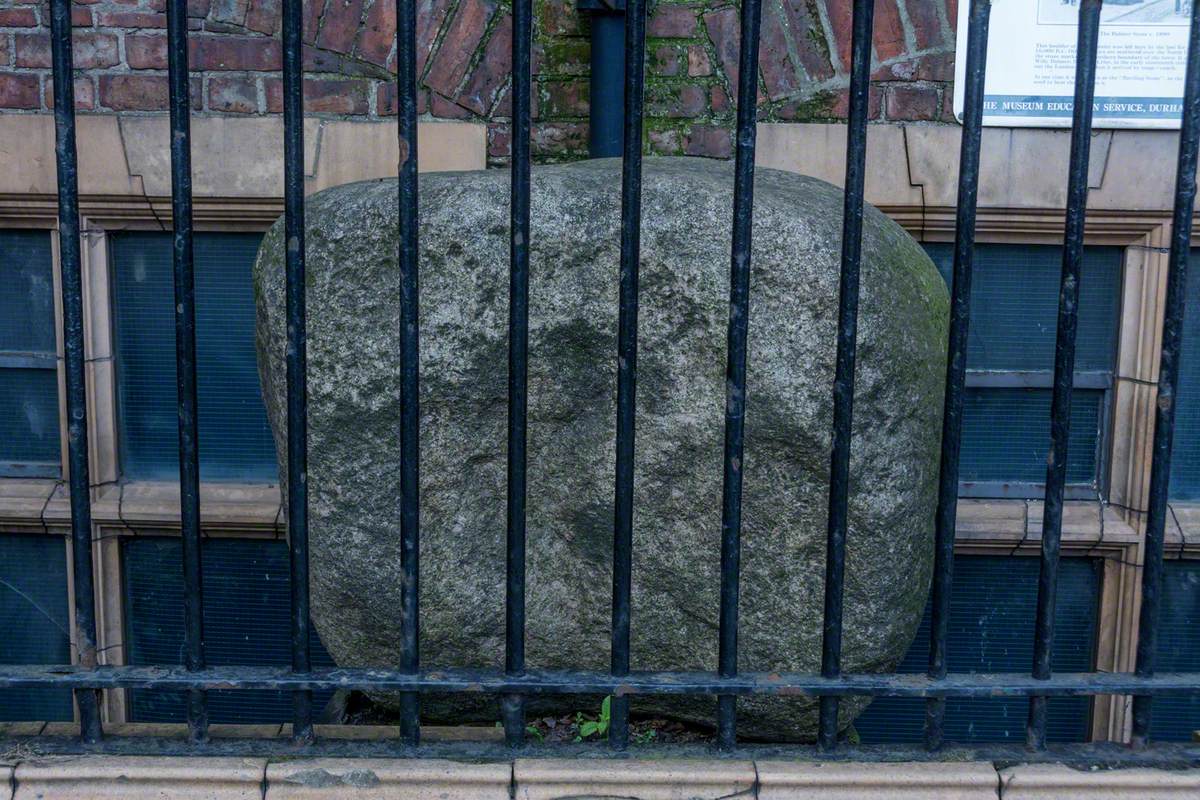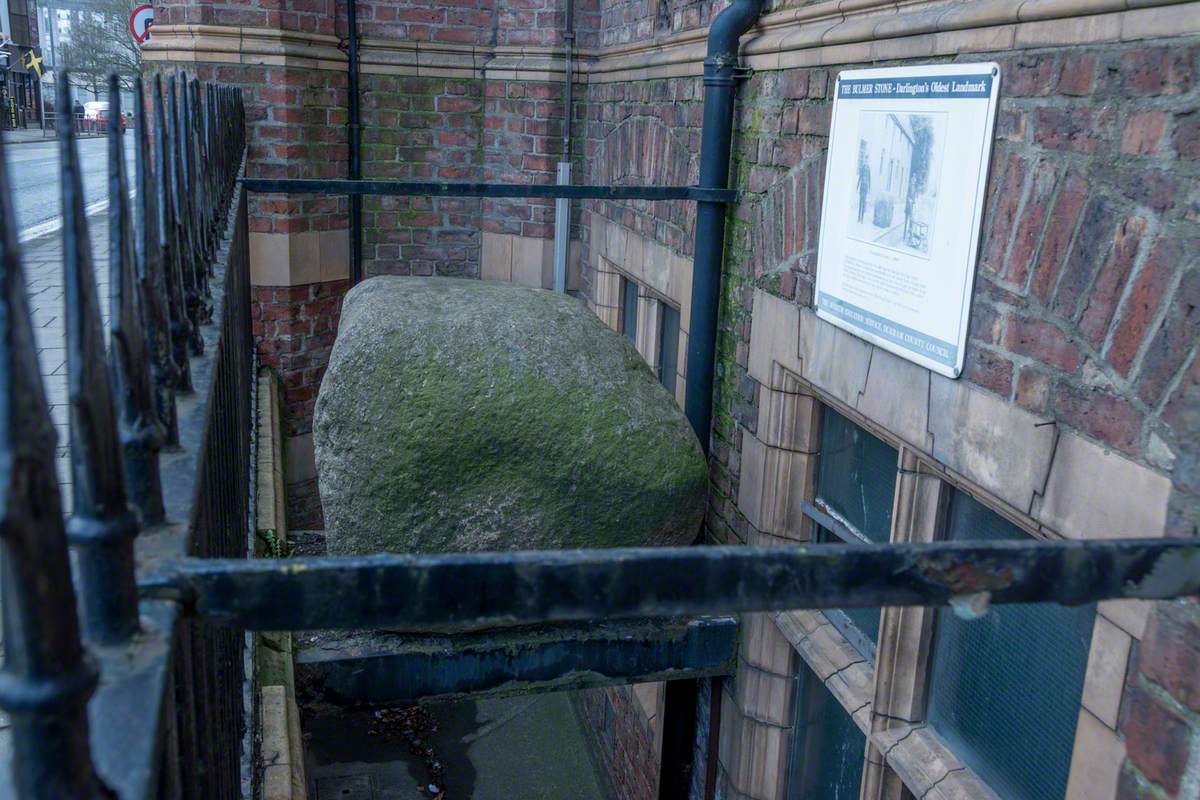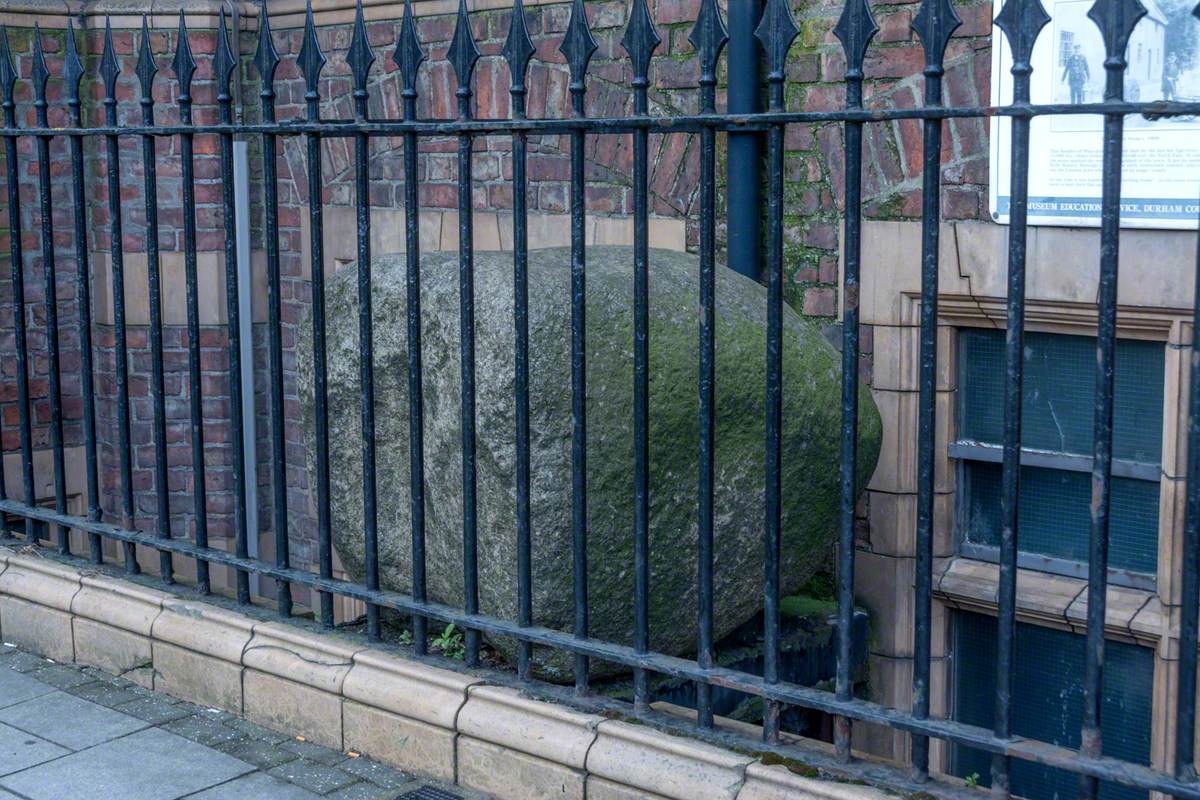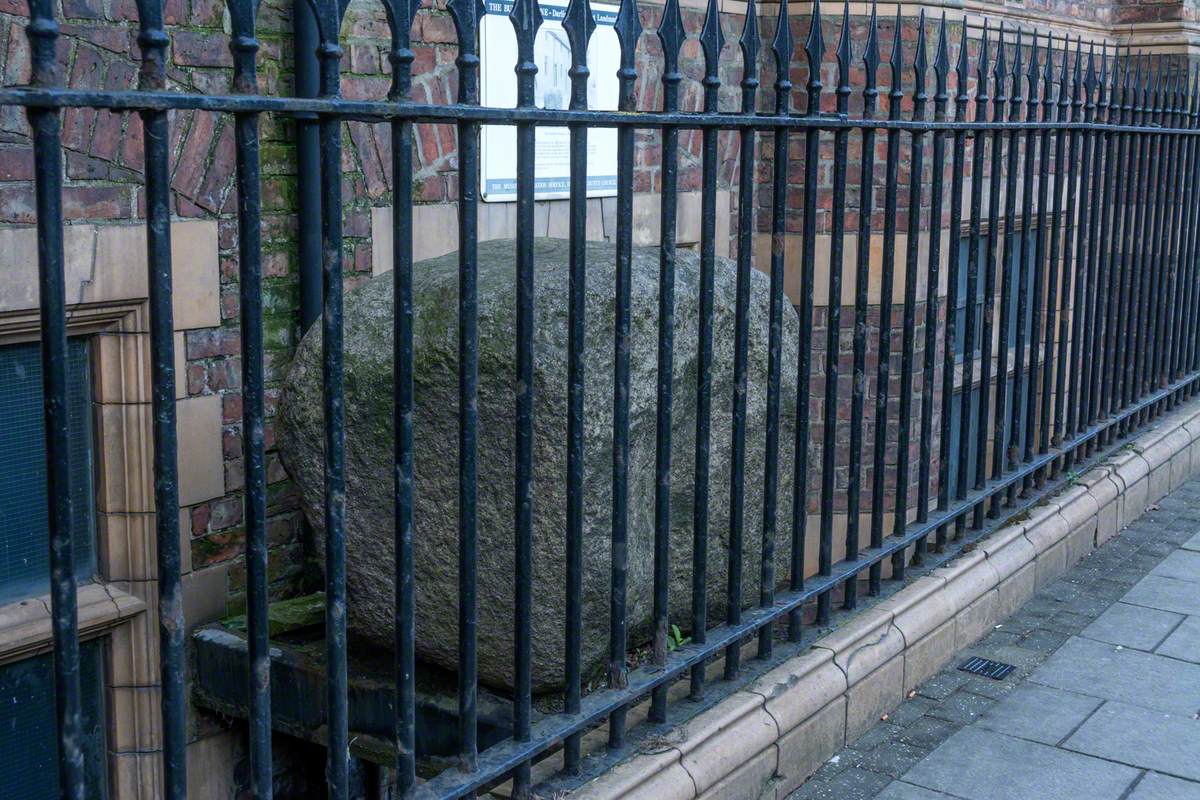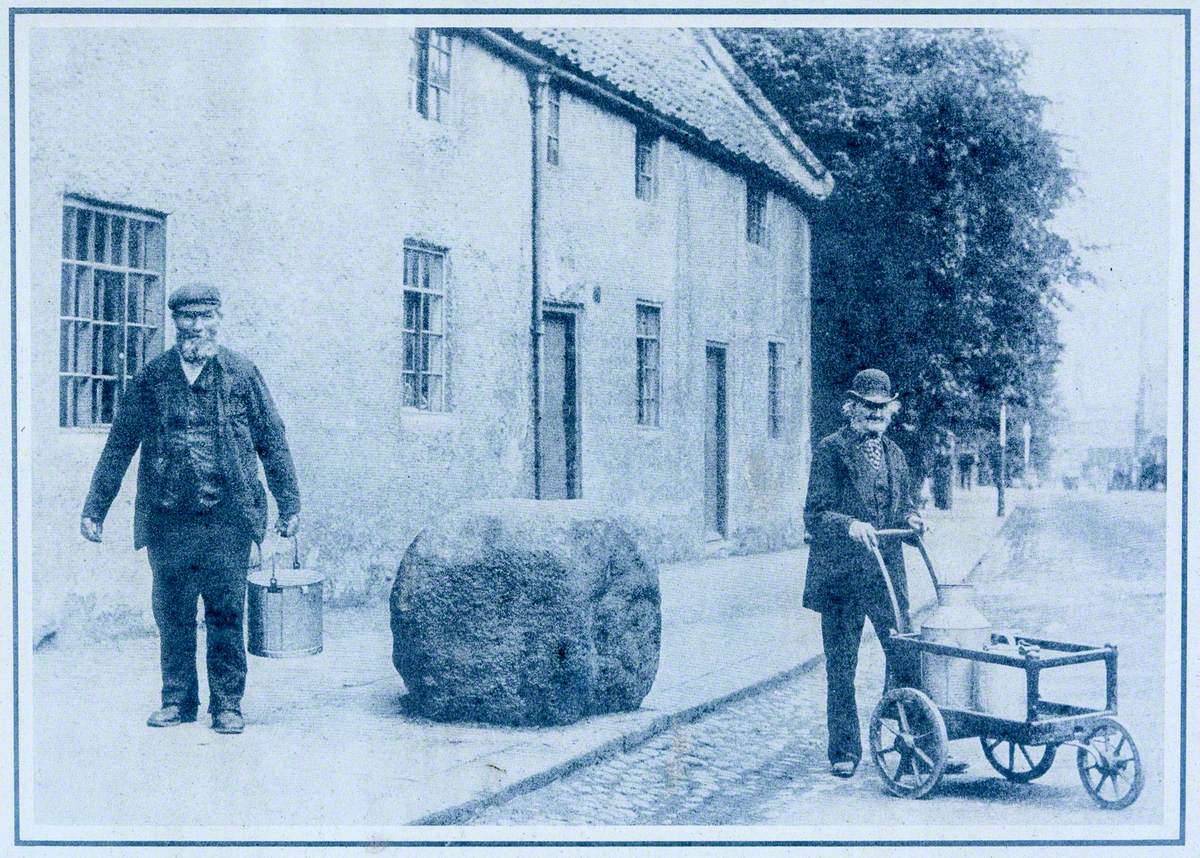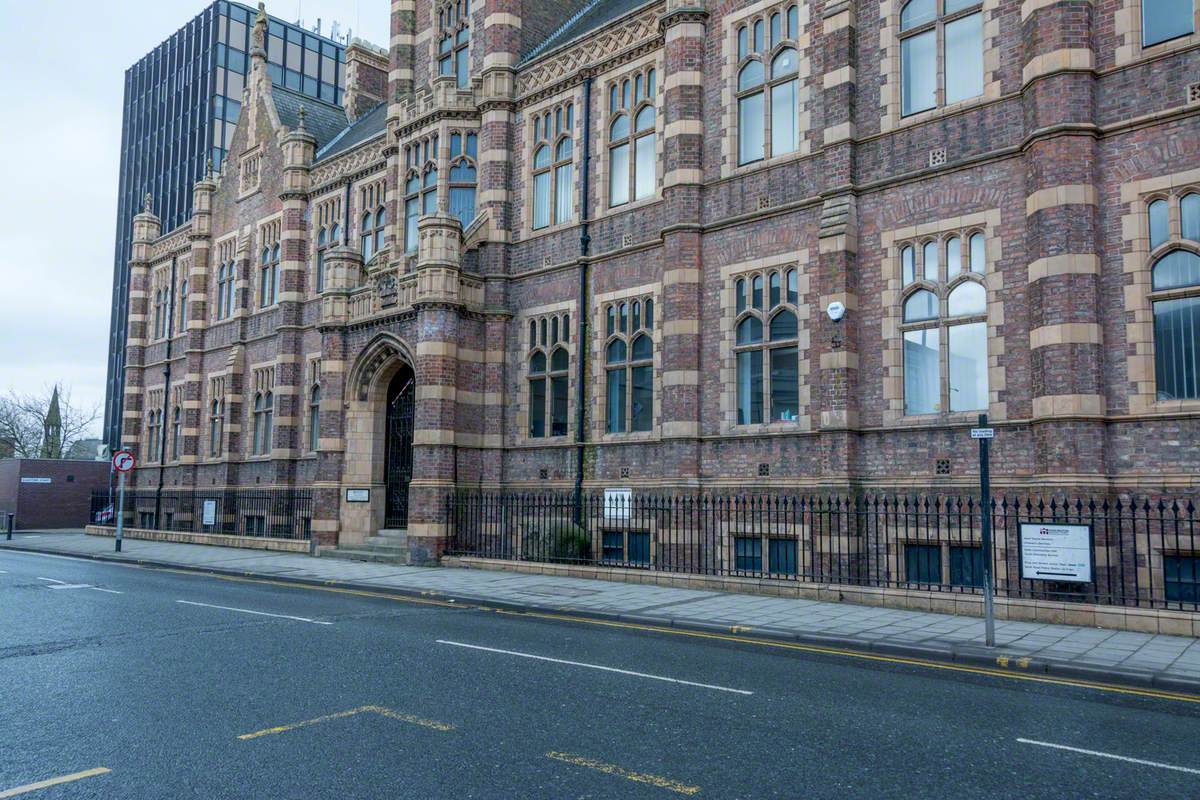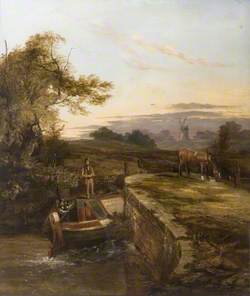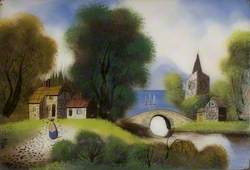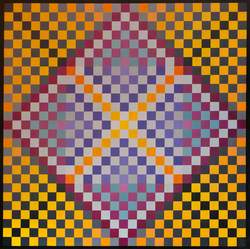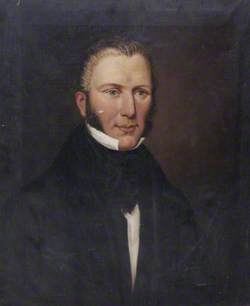How you can use this image
This image is available to be shared and re-used under the terms of the Creative Commons Attribution-NonCommercial licence (CC BY-NC).
This image can be reproduced in any way apart from any commercial uses.
Wherever you reproduce the image or an altered version of it, you must attribute the original creators (acknowledge the original artist(s), the person/organisation that took the photograph of the work) and any other stated rights holders.
Review our guidance pages which explain how you can reuse images, how to credit an image and how to find more images in the public domain or with a Creative Commons licence available.
DownloadNotes
Add or edit a note on this artwork that only you can see. You can find notes again by going to the ‘Notes’ section of your account.
For centuries the boulder was a significant local landmark, in close proximity to the road. In June 1923 it was moved just 6 yards and placed behind iron railings and in the shadow of the Technical College, (now Central House). There was some protest from the inhabitants of Darlington, stating that it was 'desecration' and 'vandalism' to move the stone from the spot where it had stood for many thousands of years.
Title
The Bulmer Stone (Bulmer's Stone)
Date
1923
Medium
Shap granite
Measurements
H 100 x W 130 x D 130 cm (E)
Accession number
DL1_HJC_S010
Work type
Sign or marker
Owner
Darlington Borough Council
Custodian
Darlington Borough Council
Work status
extant
Unveiling date
29th June 1923
Access
at all times
Inscription description
THE BULMER STONE - Darlington’s Oldest Landmark / The Bulmer Stone c. 1890 / This boulder of Shap granite was left here by the last Ice Age circa / 10,000 B.C. Other erratics are scattered over the North East. At one time / the stone marked the northern boundary of the town. It got its name from / Willy Bulmer, Town Crier, in the early nineteenth century, who called / out the London news when it arrived by stage - coach. / At one time it was known as the 'Battling Stone', as the town weavers used it to beat their flax on it. / THE MUSEUM EDUCATION SERVICE, DURHAM COUNTY COUNCIL

